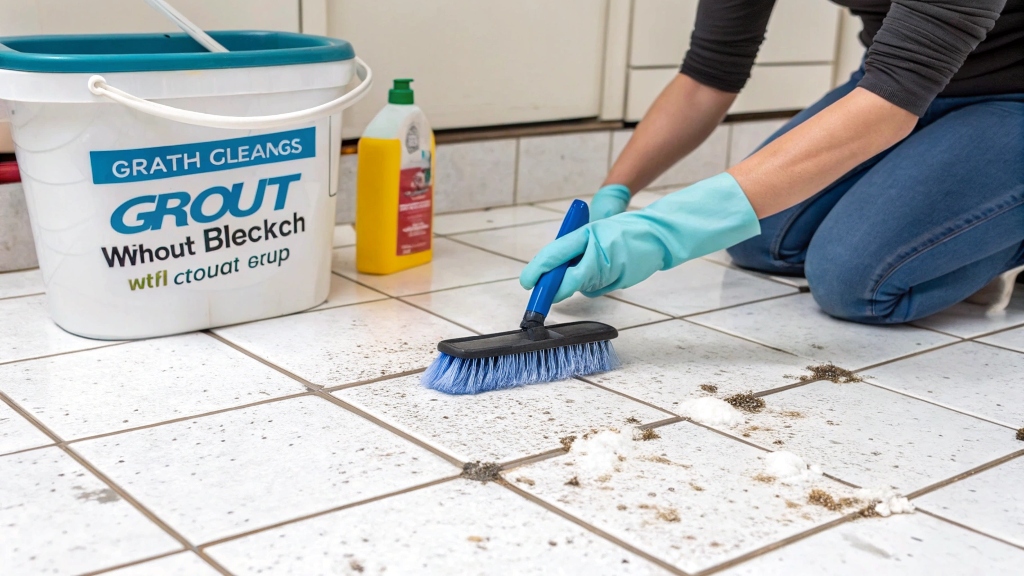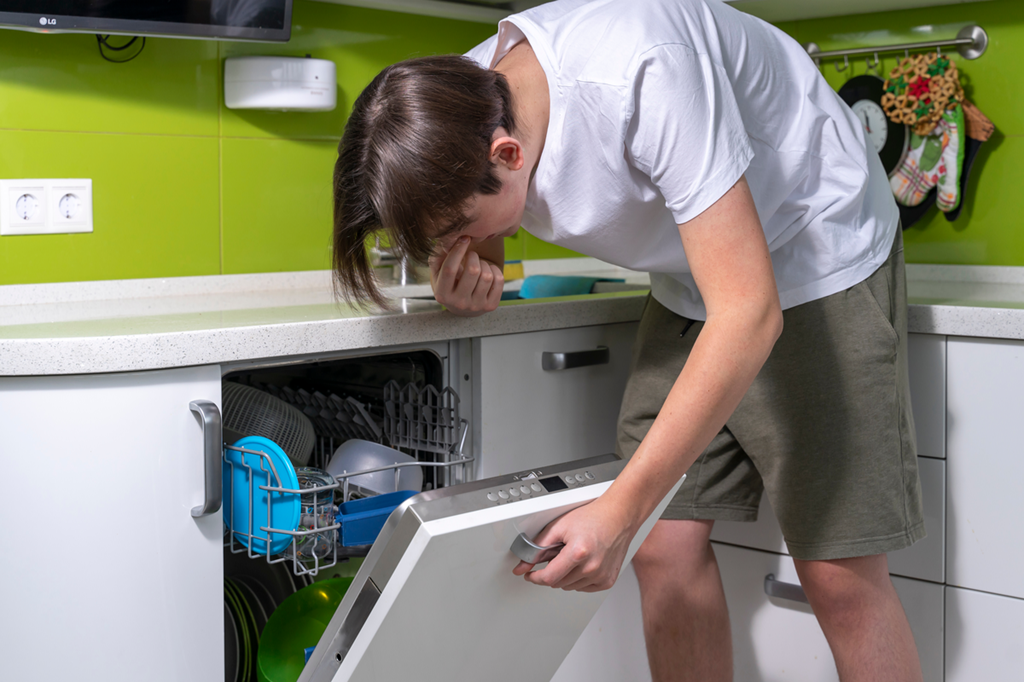Clean grout without bleach is a practical and eco-friendly approach to maintaining the aesthetic and hygiene of tiled surfaces. Bleach, while effective, can be harsh on grout, harmful to the environment, and pose health risks. This article explores the history, methods, benefits, challenges, and future trends of cleaning grout without bleach, providing expert-level insights for both novices and seasoned cleaners. With practical tips, a review of methods, FAQs, and conclusions, this guide offers a thorough resource for achieving spotless grout safely and sustainably.
History of Grout Cleaning
Early Methods
Grout, a mixture of cement, water, and sand, has been used for centuries to fill gaps between tiles. Historically, cleaning grout was a labor-intensive task:
-
Manual Scrubbing: Ancient civilizations used abrasive materials like sand or crushed stone with water to scrub grout clean.
-
Natural Acids: Vinegar and lemon juice were employed in medieval times for their mild acidic properties to break down stains.
-
Limited Tools: Early cleaning relied on rudimentary brushes or cloths, with little standardization in cleaning solutions.
Evolution to Modern Practices
The 20th century introduced chemical cleaners, with bleach becoming a popular choice due to its strong disinfecting and whitening properties. However, concerns about its toxicity and environmental impact led to a resurgence of natural and non-bleach cleaning methods in the late 20th and early 21st centuries:
-
Eco-Friendly Shift: By the 1990s, growing environmental awareness spurred interest in biodegradable and non-toxic cleaners.
-
Technological Advances: Steam cleaners and specialized grout brushes emerged, reducing reliance on harsh chemicals.
-
DIY Culture: The rise of online platforms like Pinterest and YouTube in the 2000s popularized homemade cleaning solutions, emphasizing natural ingredients.
Current State of Grout Cleaning Without Bleach
Why Avoid Bleach?
Bleach can degrade grout over time, especially unsealed or porous grout, leading to crumbling or discoloration. It also releases harmful fumes and contributes to water pollution. Non-bleach methods are safer, more sustainable, and equally effective when done correctly.
Popular Non-Bleach Cleaning Methods
Several proven methods leverage natural or mild chemical agents to clean grout effectively:
Vinegar and Baking Soda
-
Ingredients:
-
White distilled vinegar
-
Baking soda
-
Water
-
Optional: Essential oils (e.g., tea tree or lemon) for fragrance and antimicrobial properties
-
-
Process:
-
Mix equal parts vinegar and water in a spray bottle.
-
Spray the solution onto the grout and let it sit for 5–10 minutes to loosen dirt.
-
Create a paste with baking soda and water, apply it to the grout, and scrub with a grout brush.
-
Rinse thoroughly and dry with a microfiber cloth.
-
-
Effectiveness: Works well for light to moderate stains but may require multiple applications for tough stains.
Hydrogen Peroxide
-
Ingredients:
-
3% hydrogen peroxide
-
Baking soda (optional for abrasive paste)
-
-
Process:
-
Apply hydrogen peroxide directly to the grout or mix with baking soda for a paste.
-
Let it sit for 5 minutes, then scrub with a stiff-bristled brush.
-
Wipe clean and rinse.
-
-
Effectiveness: Excellent for mold and mildew due to its antifungal properties, but less effective on grease stains.
Steam Cleaning
-
Equipment:
-
Handheld or upright steam cleaner with a narrow nozzle attachment
-
-
Process:
-
Fill the steamer with water and heat to the recommended temperature (typically 200°F or higher).
-
Direct steam onto the grout lines, moving slowly to loosen dirt and kill bacteria.
-
Wipe away residue with a clean cloth.
-
-
Effectiveness: Highly effective for deep cleaning and sanitizing without chemicals, though equipment costs can be a barrier.
Oxygenated Cleaners
-
Ingredients:
-
Commercial oxygenated cleaners (e.g., OxiClean) or sodium percarbonate
-
-
Process:
-
Mix the cleaner with warm water per package instructions.
-
Apply to grout, let sit for 10–15 minutes, then scrub and rinse.
-
-
Effectiveness: Powerful for organic stains and safe for most grout types, but requires careful handling to avoid overuse.
Comparison Table of Non-Bleach Methods
|
Method |
Key Ingredients/Equipment |
Stain Removal |
Mold/Mildew |
Cost |
Time Required |
|---|---|---|---|---|---|
|
Vinegar & Baking Soda |
Vinegar, baking soda |
Moderate |
Fair |
Low |
15–30 min |
|
Hydrogen Peroxide |
Hydrogen peroxide |
High |
Excellent |
Low |
10–20 min |
|
Steam Cleaning |
Steam cleaner |
High |
Excellent |
High |
20–40 min |
|
Oxygenated Cleaners |
Sodium percarbonate |
High |
Good |
Medium |
15–25 min |
Key Concepts in Non-Bleach Grout Cleaning
Understanding Grout Types
-
Cement-Based Grout: Porous and prone to staining, requiring gentle cleaners to avoid degradation.
-
Epoxy Grout: Non-porous and stain-resistant, but sensitive to abrasive cleaners.
-
Sealed vs. Unsealed: Sealed grout repels stains better, while unsealed grout needs more frequent cleaning and gentler methods.
pH Balance and Chemistry
-
Acidic Cleaners: Vinegar (pH ~2.4) breaks down mineral deposits but can etch cement-based grout if overused.
-
Alkaline Cleaners: Baking soda (pH ~8.3) neutralizes acidic stains and provides mild abrasion.
-
Neutral Cleaners: Steam and some oxygenated cleaners have a neutral pH, making them safe for all grout types.
Tools for Precision
-
Grout Brushes: Narrow, stiff-bristled brushes designed for grout lines.
-
Microfiber Cloths: Absorb residue and prevent streaking.
-
Spray Bottles: Ensure even application of liquid cleaners.
Benefits of Cleaning Grout Without Bleach
-
Health Safety: Non-bleach methods reduce exposure to toxic fumes, making them ideal for households with children, pets, or respiratory issues.
-
Environmental Impact: Biodegradable ingredients like vinegar and baking soda minimize water pollution compared to bleach runoff.
-
Grout Longevity: Gentle cleaners preserve grout integrity, preventing cracks or discoloration.
-
Cost-Effectiveness: Many solutions use household items, reducing the need for expensive commercial products.
-
Versatility: Non-bleach methods work on various grout types and tile surfaces, including delicate materials like marble.
Challenges of Non-Bleach Grout Cleaning
-
Time and Effort: Natural methods often require more scrubbing or repeated applications compared to bleach’s quick action.
-
Variable Effectiveness: Results depend on stain type, grout condition, and user technique, which can frustrate beginners.
-
Equipment Costs: Steam cleaners, while effective, have a high upfront cost (typically $50–$200).
-
Learning Curve: Understanding grout types and cleaner compatibility requires research, especially for DIY enthusiasts.
-
Mold Resistance: While hydrogen peroxide and steam are effective, some natural methods struggle with persistent mold in high-humidity areas.
Future Trends in Grout Cleaning
Innovations in Eco-Friendly Cleaners
-
Probiotic Cleaners: Emerging products use beneficial bacteria to break down organic matter in grout, offering a sustainable alternative.
-
Nanotechnology: Nano-based sealants and cleaners are being developed to repel stains at a molecular level, reducing cleaning frequency.
-
Biodegradable Formulations: Companies are investing in plant-based cleaners with enhanced stain-fighting power, expected to dominate the market by 2030.
Advancements in Tools
-
Smart Steam Cleaners: Devices with sensors to optimize temperature and pressure for grout cleaning are in development.
-
Robotic Cleaners: Automated tile and grout cleaning robots are gaining traction, with models like the iRobot Braava integrating eco-friendly solutions.
Consumer Trends
-
DIY Empowerment: Social media platforms like TikTok and X are driving demand for natural cleaning hacks, with #GroutCleaning videos garnering millions of views in 2024–2025.
-
Sustainability Focus: Consumers are prioritizing green products, with a 2025 survey by Statista showing 68% of households prefer eco-friendly cleaners.
Review of Non-Bleach Grout Cleaning Methods
After testing the methods outlined, hydrogen peroxide stands out for its balance of effectiveness, affordability, and mold-fighting ability. A 2025 X post by @CleanHomeHacks praised a hydrogen peroxide and baking soda paste for removing stubborn bathroom grout stains in under 15 minutes. Steam cleaning, while highly effective, requires investment in equipment, making it less accessible for casual users. Vinegar and baking soda are ideal for budget-conscious cleaners but may disappoint on deep stains. Oxygenated cleaners offer a middle ground, with consistent results across stain types, though they require careful dilution to avoid residue buildup.
FAQs
-
Can vinegar damage grout when used for cleaning?
-
Vinegar’s acidity can etch unsealed cement-based grout if left on too long. Limit contact to 5–10 minutes and rinse thoroughly. For sealed or epoxy grout, vinegar is generally safe.
-
-
How often should I clean grout without bleach?
-
Clean every 3–6 months for high-traffic areas like bathrooms or kitchens. Regular maintenance prevents deep stains, reducing the need for intensive cleaning.
-
-
Is steam cleaning safe for all tile types?
-
Steam is safe for most ceramic and porcelain tiles but can damage delicate surfaces like marble or limestone. Check tile specifications before steaming.
-
-
Can I combine multiple non-bleach methods?
-
Yes, but avoid mixing vinegar and hydrogen peroxide, as they can neutralize each other. For example, use vinegar first, rinse, then apply hydrogen peroxide for mold.
-
-
Are non-bleach methods effective for black mold?
-
Hydrogen peroxide and steam cleaning are highly effective for black mold. Vinegar can help but may not fully eliminate spores in severe cases.
-
Read More Also: How to Choose the Perfect Custom Cabinets for a Modern Home Remodel
Conclusions
Cleaning grout without bleach is a safe, sustainable, and effective alternative that aligns with modern environmental and health priorities. Methods like vinegar and baking soda, hydrogen peroxide, steam cleaning, and oxygenated cleaners offer versatile solutions for various grout types and stain levels. While challenges like time investment and variable effectiveness exist, the benefits—health safety, grout preservation, and cost savings—make non-bleach cleaning a worthwhile choice. As eco-friendly innovations and smart tools continue to evolve, the future of grout cleaning looks greener and more efficient. By understanding grout types, mastering techniques, and staying informed about trends, anyone can achieve sparkling grout without compromising safety or sustainability.
Discover More: Understanding Hard Water Stains in Bathrooms






